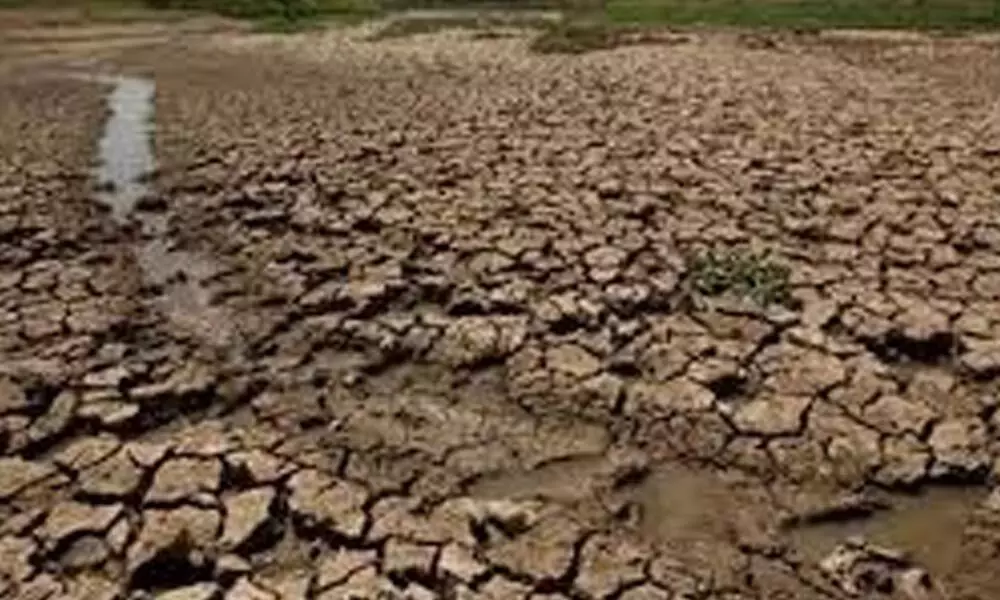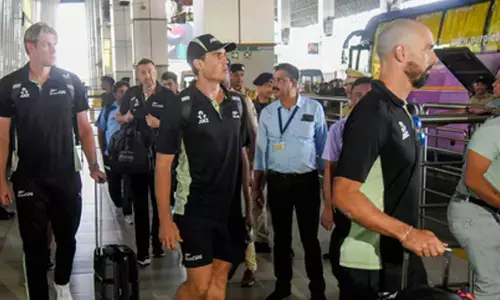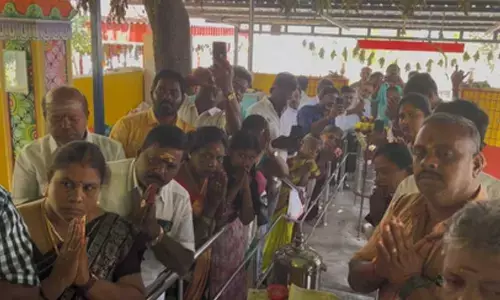Need for a policy framework that can drought-proof Anantapur

Need for a policy framework that can drought-proof Anantapur
If cities like Hyderabad can be made drought-proof, why should villages be left abandoned?
In the midst of all the promises, pledges and rising climate ambitions that keep the global leadership completely engrossed at the 2021 United Nations Climate Change Conference (COP26) being held at Glasgow, continuing drought for almost two decades and the resulting human misery engulfing Anantapur district in Andhra Pradesh will certainly not be on the agenda.
Hit devastatingly by climate aberrations, Anantapur district for 18 years since 2000 reeled under a menacing drought. I don't know whether the promise to keep the global temperature rise between 1.5 to 2.0 degrees above the pre-industrial levels, and that, too, by the year 2050, will make the rain gods smile in the rain-shadow region of Andhra Pradesh, but by then the villages will empty out for sure. With empty farms, abandoned homes, and with the able-bodied having already left the villages, looking for menial jobs elsewhere, these near-empty villages will soon turn into ghost villages.
A report last week came as a shocker. As the report said, Anantapur in Telugu means 'blessed with many things," I searched in Google to know what the district is better known for, if not rains. The first entry that cropped up says Anantapur is bestowed with abundant gold mines, besides historic monuments and handloom weaving. Nothing surprising, you would say. After all, many regions that seep in distress and misery have been blessed with adequate mineral resources, as well as art and culture. For instance, the infamous Kalahandi region of Odisha, once forming part of the starvation belt of the country, has its name meaning a "pot of art." Kalahandi had since emerged from the shadows of hunger; I only hope Anantapur district does not slide deeper into a cesspool of deprivation and neglect.
Why I am saying this is because several years ago, an IndiaSpend report in 2019 had talked of the unprecedented crisis that the drought-hit Rayalaseema region of Andhra, comprising Anantapur, Kurnool, Chittoor and YSR Kadapa were coping with. This region, of which Anantapur is a part, had faced 15 droughts in 18 years since 2000. An estimated 7 lakh people had migrated out of the region in 2018. The rate at which people were migrating at that time was worrisome indeed. Only elders and children were left behind, and couples would usually migrate to far-flung areas in Kerala, Bangalore and Mumbai. Well, I am not sure whether you have noticed, but most of the rickshaw pullers in Hyderabad and Vijayawada, too, came from these drought-affected areas.
The news report last week added to the painful thoughts I carried of the drought-devastated Anantapur district. Accordingly, with 90 per cent of the cultivable lands dependent on rains, the standing crop had failed in 15 of the past 26 years. Obviously, this will impact farming operations, and as expected the cultivated area has shrunk by 50 per cent over the decades. Whatever is grown, and if the crop reaches harvest, is simply for home consumption. Else, it is left for the cattle to graze. Quoting YV Malla Reddy of Accion Fraterna Ecology Centre in Anantapur district, it says between four to six lakh people have abandoned agriculture and moved out. Not sure how many of us would feel a chill going the spine to even imagine how these children of lesser gods are surviving against all odds. To even think how excruciating and distressful it must be for them to bear the shock of failed rainfall and that too year after year?
Such is the grave tragedy that for a country mesmerised by all the talk and projections towards a high growth trajectory, the tales of misery and distress that a continuing drought has left behind in Anantapur district and for that matter in several parts of rural India is not something to even think about, or to feel remotely concerned. After all, as it is generally believed, a high growth trajectory is certain to leave some behind. The public morality that we encounter is increasingly built on the right-based economic ideology that growth invariably comes with pain. And it is always the people on margins who are left inflicted with pain and suffering.
This also gels with the dominant economic thinking that believes in pushing people out of the rural areas to migrate in increasing numbers to the cities which are in need of cheap labour. It also goes with the policy design that lays emphasis on increasing urbanisation to achieve high economic growth. Whether these poor who are moved from the existing rural poverty framework to a new poverty canvas in the cities where the poor are packed in slums, providing the workforce that the average middle-class inhabitant needs, the moral universe that we have created would do to all extent to justify it. After all, this is how the trickle-down theory works. And then we are told in as many words, there is no other alternative. It would be the growth story of our times if a reverse thinking on what really constitutes economic growth were instead to take shape. Already global capital and the market forces have muddied the rural landscape, pushing people out of villages. Even that was not sustainable. Not to forget that when the country witnessed reverse migration following a few days of lockdown 1.0, when an estimated 100 million workers walked back hundreds of kilometres for days together, many migrants had even returned to the parched lands in Anantapur district. Even in dismay, these migrant workers could see hope. With a little bit of more effort, they knew they could at least grow something to keep their hunger satiated.
While there is an urgent need for G-20 countries to reduce greenhouse gas emissions so as to keep the global climate in a stable mode, an equally important challenge is to learn from the plight of drought-ravaged Anantapur district, and to come up with ambitious targets to bring policies and actions that brings hope in the otherwise disadvantageous regions of the country. It has to first begin by restoring confidence among people, and that is best ensured by initiating into motion the framework for drought-proofing. If cities like Hyderabad can be made drought-proof, I don't see any reason why the villages should be left abandoned. This has to be accompanied by an economic thought process that finds ways and means to create economically-viable rural livelihoods, with agriculture becoming a pivot of growth.
Realigning initiatives, to support the poorest and the most vulnerable should be the new moral and economic priority. The Andhra Pradesh government should hear the despairing voices from Anantapur villages, transform it to a degree that it triggers the much-awaited phenomenon of reverse migration.
(The author is a noted food policy analyst and an expert on issues related to the agriculture sector. He writes on food, agriculture and hunger)














